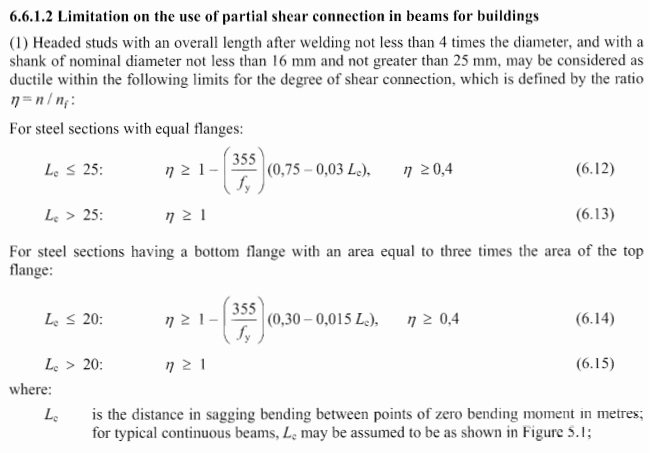Italo01
Structural
- Sep 4, 2021
- 169
Hello,
I was hired to design a reinforcement for two parallel and equal composite concrete-steel beams. The beams were not designed for the load that they are subject and the deflections are above code limits. The problem that i'm facing is that i checked the quantity of stud bolts and the beam has partial shear connection. I thought of jack up the beam, eliminating the deflection, and weld a plate below to increase the strength and stiffness of the beam, but at the moment i do this, the value of η decreases and the value of the lower limit of η, given by eurocode increases, so i cannot increase the strength and stiffness without affecting the ductility. Does anyone have a suggestion to increase the strength and stiffness of the beam and comply with this code requirement?
PS: Although i'm using the brazilian code, i posted the Eurocode criteria because they are similar and i suppose a lot of people here are familiar with the eurocode.

I was hired to design a reinforcement for two parallel and equal composite concrete-steel beams. The beams were not designed for the load that they are subject and the deflections are above code limits. The problem that i'm facing is that i checked the quantity of stud bolts and the beam has partial shear connection. I thought of jack up the beam, eliminating the deflection, and weld a plate below to increase the strength and stiffness of the beam, but at the moment i do this, the value of η decreases and the value of the lower limit of η, given by eurocode increases, so i cannot increase the strength and stiffness without affecting the ductility. Does anyone have a suggestion to increase the strength and stiffness of the beam and comply with this code requirement?
PS: Although i'm using the brazilian code, i posted the Eurocode criteria because they are similar and i suppose a lot of people here are familiar with the eurocode.

